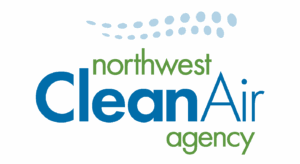Good
1 - 50
1 - 50
Moderate
51 - 100
51 - 100
Unhealthy for Sensitive Groups
101 - 150
101 - 150
Unhealthy
151 - 200
151 - 200
Very Unhealthy
201 - 300
201 - 300
Hazardous
301 - 500
301 - 500
Overall Air Quality
223 AQI
Sulfur Dioxide (SO2)
0.38 ppb
Particulates
5.81 µg/m³
Carbon Monoxide (CO)
0.02 ppb
Ozone(O3)
0.02 ppm
Please note, all times are standard time
- Now
- Today
- 1 Week
- 1 Month
- Year
Anacortes 202 O Avenue
Air Quality is Moderate
Dominant Pollutant PM2.5
Anacortes-Bartholomew Rd
Air Quality is Good
Dominant Pollutant PM2.5
Bellingham-Pacific St
Air Quality is Moderate
Dominant Pollutant PM2.5
Custer-Loomis
Air Quality is Moderate
Dominant Pollutant PM2.5
Maple Falls - Azure Way
Air Quality is Unhealthy
Dominant Pollutant PM2.5
Mt Vernon-S Second St
Air Quality is Good
Dominant Pollutant PM2.5
Oak Harbor-SW 6th
Air Quality is Good
Dominant Pollutant PM2.5
NWCAA - Loomis Trail
Air Quality is Moderate
Dominant Pollutant PM2.5
CV8
Air Quality is Unhealthy
Dominant Pollutant PM2.5
NWCAA - City of Blaine
Air Quality is Moderate
Dominant Pollutant PM2.5
NWCAA - Concrete Elementary
Air Quality is Good
Dominant Pollutant PM2.5
NWCAA - Bellingham South 1
Air Quality is Moderate
Dominant Pollutant PM2.5
NWCAA - Custer Loomis Trail Rd
Air Quality is Moderate
Dominant Pollutant PM2.5
NWCAA - North Galbraith
Air Quality is Good
Dominant Pollutant PM2.5
NWCAA - Sudden Valley
Air Quality is Moderate
Dominant Pollutant PM2.5
NWCAA - Fairhaven
Air Quality is Moderate
Dominant Pollutant PM2.5
NWCAA - Cascadia Elementary School
Air Quality is Moderate
Dominant Pollutant PM2.5
NWCAA - North Shore Rd
Air Quality is Moderate
Dominant Pollutant PM2.5
NWCAA - Langley
Air Quality is Moderate
Dominant Pollutant PM2.5
NWCAA - Birch Bay
Air Quality is Moderate
Dominant Pollutant PM2.5
NWCAA Office
Air Quality is Moderate
Dominant Pollutant PM2.5
NWCAA - Burlington Hill
Air Quality is Moderate
Dominant Pollutant PM2.5
NWCAA - Silver Beach 1
Air Quality is Good
Dominant Pollutant PM2.5
CV4
Air Quality is Unhealthy
Dominant Pollutant PM2.5
CV1
Air Quality is Moderate
Dominant Pollutant PM2.5
NWCAA - Bow Hill
Air Quality is Moderate
Dominant Pollutant PM2.5
CV2
Air Quality is Moderate
Dominant Pollutant PM2.5
NWCAA - Anacortes 202 O Ave
Air Quality is Moderate
Dominant Pollutant PM2.5
NWCAA - Immaculate Conception Regional School
Air Quality is Moderate
Dominant Pollutant PM2.5
NWCAA - Mount Vernon South
Air Quality is Moderate
Dominant Pollutant PM2.5
NWCAA - BPS
Air Quality is Moderate
Dominant Pollutant PM2.5
NWCAA - MBSA - Pan Hut
Air Quality is Good
Dominant Pollutant PM2.5
NWCAA - Franklin Academy
Air Quality is Moderate
Dominant Pollutant PM2.5
NWCAA - March Point
Air Quality is Moderate
Dominant Pollutant PM2.5
CV9
Air Quality is Unhealthy
Dominant Pollutant PM2.5
CV3
Air Quality is Unhealthy
Dominant Pollutant PM2.5
NWCAA - Meridian High School
Air Quality is Moderate
Dominant Pollutant PM2.5
NWCAA - Mount Baker High School
Air Quality is Moderate
Dominant Pollutant PM2.5
NWCAA - Acme Elementary
Air Quality is Moderate
Dominant Pollutant PM2.5
NWCAA - Bow 2
Air Quality is Moderate
Dominant Pollutant PM2.5
NWCAA - WD13
Air Quality is Unhealthy for Sensitive Groups
Dominant Pollutant PM2.5
NWCAA - Lynden High School
Air Quality is Good
Dominant Pollutant PM2.5
NWCAA - Paradise Lakes
Air Quality is Unhealthy for Sensitive Groups
Dominant Pollutant PM2.5
NWCAA - Point Roberts Elementary
Air Quality is Moderate
Dominant Pollutant PM2.5
NWCAA - Birchwood
Air Quality is Moderate
Dominant Pollutant PM2.5
NWCAA - Nooksack Valley High School
Air Quality is Good
Dominant Pollutant PM2.5
NWCAA - Blaine High School
Air Quality is Moderate
Dominant Pollutant PM2.5
NWCAA - Elger Bay Elementary
Air Quality is Moderate
Dominant Pollutant PM2.5
NWCAA - Sumas Elementary
Air Quality is Good
Dominant Pollutant PM2.5
NWCAA - Harmony Elementary
Air Quality is Moderate
Dominant Pollutant PM2.5
NWCAA - Lynden School District Facilities Office
Air Quality is Good
Dominant Pollutant PM2.5
NWCAA - Meridian Elementary
Air Quality is Moderate
Dominant Pollutant PM2.5
NWCAA - Everson Elementary
Air Quality is Moderate
Dominant Pollutant PM2.5
NWCAA - Island County Public Health
Air Quality is Moderate
Dominant Pollutant PM2.5
NWCAA - Elizabeth Park
Air Quality is Moderate
Dominant Pollutant PM2.5
NWCAA - Silver Beach 2
Air Quality is Good
Dominant Pollutant PM2.5
NWCAA - Whatcom County Fire District 14 Station 92
Air Quality is Unhealthy
Dominant Pollutant PM2.5











